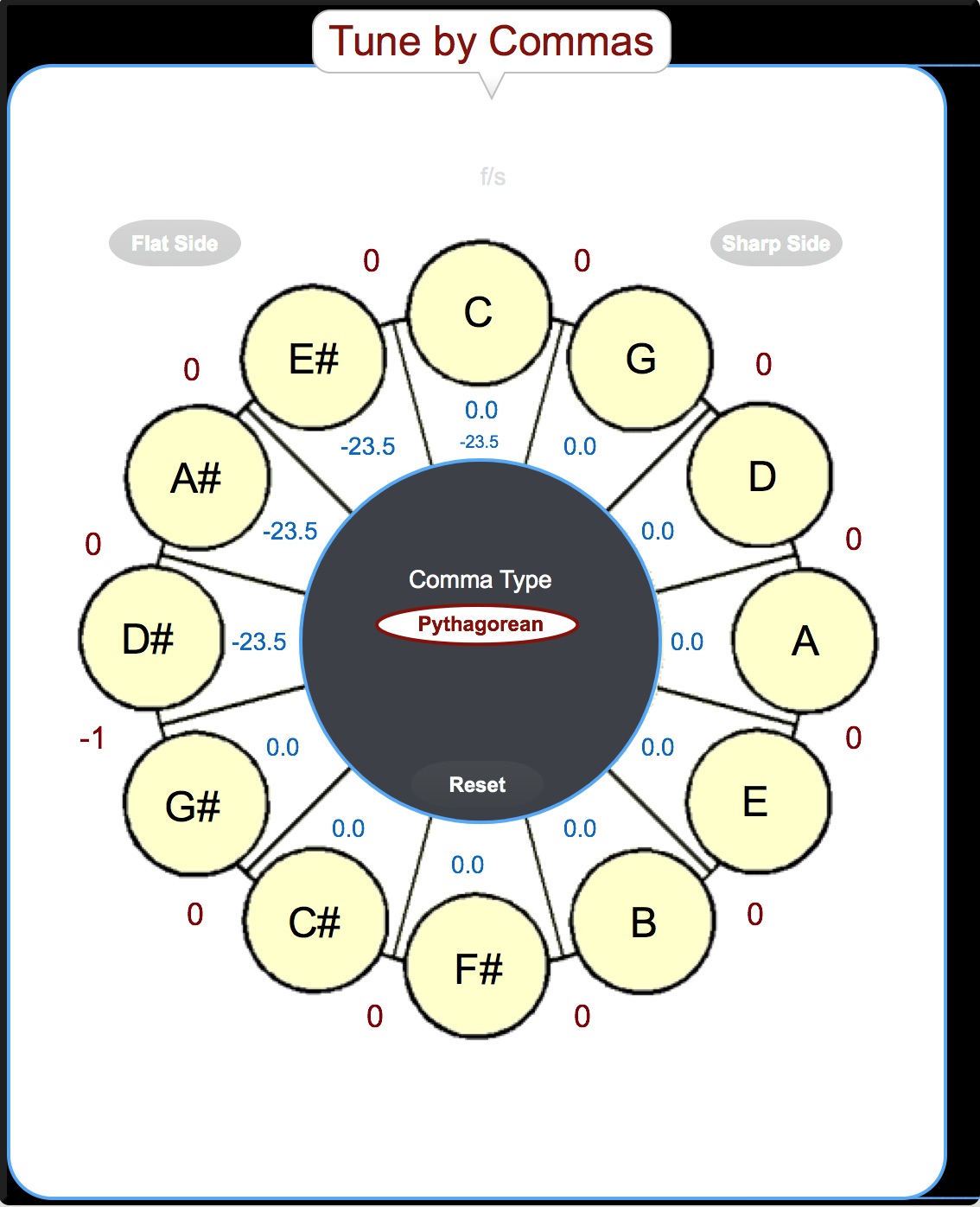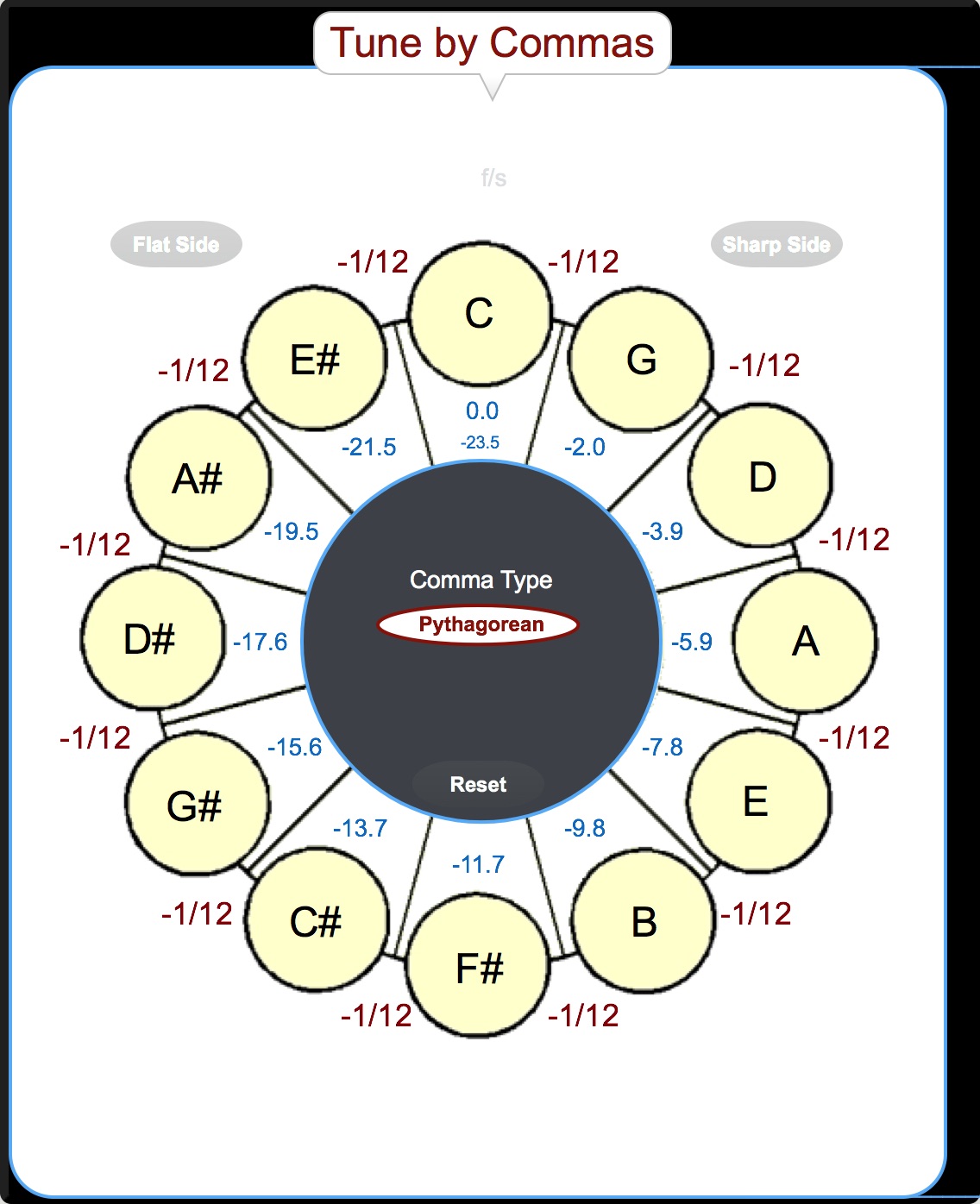bitSuite
Example #1: Pythagorean
When tuning a keyboard using mathematically perfect fifths, every octave becomes sharper by 23.5 cents. It is mathematically impossible to have fifths and octaves both be in tune, because the factors of 3 and 2 in a pitch’s upper partials are incompatible. When using Pythagorean tuning, every fifth is tuned perfectly, save one out-of-tune note between D# and G# ascending, or Eb and Ab descending.
With Pythagorean tuning selected, look at the Tune by Commas panel. Beginning at C at the top of the circle, every fifth is tuned perfectly, except for one: Between D# and G# there is a -1. This is a comma, a tuning offset which in this case is about -23.5 cents, and is inserted to ensure octave equivalence at the next highest C. Outside the circle, the red text shows where the commas are being inserted. In the blue text, G#, D#, A#, and E# are all offset by 23.5 cents from the cycle of perfect 3/2 Pythagorean fifths. This means each pitch after the comma is 23.5 cents lower than what it would have been had the cycle of Pythagorean fifths continued.
Pythagorean Sharp:

Toggle “Flat Side” (or use the 'f' and 's' keys) and note that the comma is inserted between Eb and Ab, enharmonic equivalents of D# and G#. However, inserting the comma treats affects the sharp and flat sides differently. On the flat side, the offset begins at Ab, where the subsequent notes are raised relative to the cycle of perfectly tuned fifths. On the sharp side, the offset begins at D#, where the subsequent notes are lowered. This means that on the sharp side, G# is the last note tuned to Pythagorean fifths before the subsequent clockwise pitches are lowered 23.5 cents, where on the flat side, Ab and the subsequent counter-clockwise pitches are raised 23.5 cents.
Pythagorean Flat:

Because a traditional keyboard has only one key per "note" all of these sound the same frequency (they are enharmonic equivalents, Ab and G# sound the same), but when we are tuning a keyboard, sometimes we move in counterclockwise direction tuning fifths, in which case the flat-side representation is relevant, and other times we move clockwise tuning fifths, so the sharp-side representation is relevant.
Click the C at the top of the circle to hear the original pitch, then hold shift and click again to hear C an octave above. Now, click on the comma between D# and G#, change it to 0, and shift-click the high C again: With the comma removed, the high C becomes 23.5 cents sharp. This difference represents the fundamental problem of tuning. For octaves to be the same, one has to distribute fractions of a comma around the circle of fifths.
There are a number of ways to think about distributing the comma across the circle of fifths, so long as the fractions result in a sum of -1. Select Equal Temperament from the upper menu above the divider, and you will see that the comma has been distributed equally between fifths. For more information, visit session two of “Reinventing the Piano” in Kadenze.
